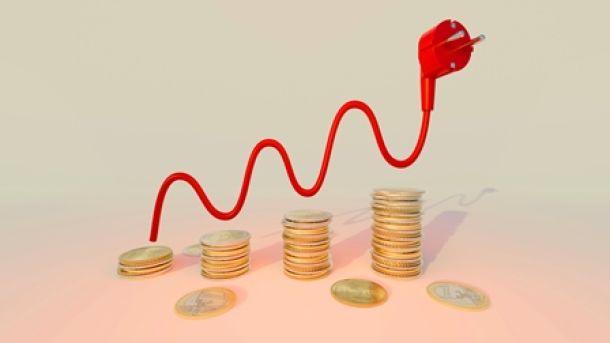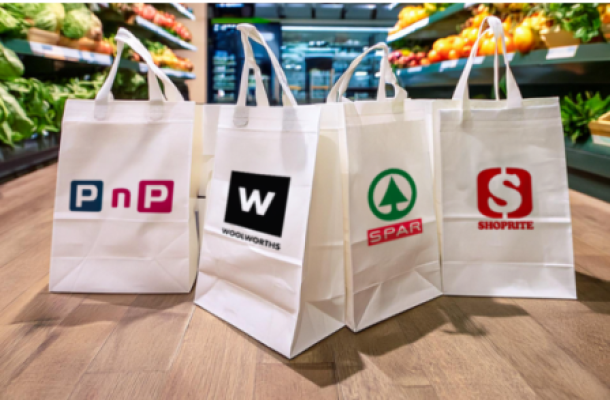What is South Africa eating? Valuable new research paper fills data gap
There is an infamous dearth of accessible data and intelligence on food trends and consumption in South Africa, unless you have deep pockets to buy expensive reports from various market research companies.
The largest and only national food consumption survey conducted in SA was way back in 1999, but now a new paper published by Stellenbosch University PhD student, Lisa Ronquest, has uncovered a tome of valuable broad consumption data. What she found, however, is not much cause for public health celebration.
Ronquest's article, “Food Consumption changes in South Africa since 1994”, which is published in the current issue of the SA Journal of Science, comes from her PhD research at Stellenbosch University’s Department of Food Science, where she is investigating how the food and beverage industry can use science and technology to respond to the major shifts in food consumption patterns.
One of SA's top young food scientists, a year ago Ronquest took up the position of head of product development at Mars Food Global, working out of The Netherlands. FOODStuff SA is publishing a series of blogs on her personal perspectives as a food scientist working/travelling internationally.
Basis for the findings:
Owing to the lack of regular national food consumption surveys or comparable food consumption survey data, Ronquest has based her research on two databases/resources:
- The Food and Agriculture Organization Corporate Statistical Database, or FAOSTAT - food balance sheets
- Euromonitor International Passport
She emphasises that the stats are per capita consumption, so there will be differences based on demographics, income, the rural/urban etc.
In a nutshell, Ronquest has found that compared with two decades ago, South Africans are consuming more kilojoules on average, drinking more sugary beverages, eating more processed and packaged food, more animal-sourced foods, they love yoghurt, more caloric sweeteners or added sugars, and fewer vegetables.
Briefs from this comprehensive paper:
Protein...
- South Africans consumed 18kg of meat pa more in 2009 than they did in 1994. Poultry is up 109% and pork by 119% from 1994 to 2009, with beef, mutton and goat meat consumption remaining relatively stable.
- The total data set suggests that value-added processed meat consumption has increased significantly since 1994, as much as 45.8%.
- Egg consumption has increased by 55.8% and 24.1% from 1994 to 2009 and 1999 to 2012, respectively. This finding is in line with marked increases in worldwide egg consumption, especially in developing countries.
- Fish consumption increased by more than 26%.
Cereals...
- The largest contributors to total food and cereal consumption for South Africans in 2012 were maize (104 kg.capita/year) and wheat (60.9kg.capita/year).
- A slight decrease of 4.6% in maize consumption from 1994 to 2009 is expected to continue into 2020 as household incomes continue to increase and consumers move towards higher-value food items, and rice and oats have showed significant increases in consumption of 48% and 83.3%, respectively, since 1994.
- Millet and sorghum showed declines in consumption of 66.7% and 21.1%, respectively, but are not significant contributors to total cereal consumption for South Africans.
Dairy...
- Consumption of dairy generally increased by 8.4% from 1994 to 2009 and by 14.7% from 1999 to 2012.
- Increases of 18.5% and 6.8% in cheese and drinking milk consumption, respectively, while there has been a dramatic increase of 73.7% in yoghurt and sour milk products consumption since 1999.
- Cow’s milk consumption increased by 7.3% with a larger increase of 16.7% in value-added flavoured milk products over the same period.
Fruit and vegetables...
- South Africans are eating slightly more fruit than in 1994 with about a 6% increase since 1994, led mainly by increases in banana, apple and grapefruit consumption.
- Fruit is the most commonly purchased street food item.
- Unfortunately, a slight decrease in vegetable consumption can be seen in both sets of data. However, tomato and onion consumption increased moderately. Consumption of starchy roots (mainly potatoes) increased, too, with corresponding slight decrease in that of sweet potato.
Fats...
- Despite official dietary guidelines recommending otherwise, the consumption of fats has increased by more than 28.5% according to both data sources.
- Vegetable oils are up by 29.6% and oil crops consumption by 108.3%, coupled with a marked decrease in animal fat consumption of -53.8%.
- Butter consumption specifically has increased from 0.3 to 0.4 kg.capita/year (33.3%) from 1999 to 2012 with margarine consumption increasing by 13.6% to 2.5 kg.capita/year.
- Olive oil consumption only became measureable in 2012 with 0.1 kg.capita/year.
Sugar and stimulants...
- Since 1994, consumption of sugar and sweeteners as raw sugar or natural sweeteners (eg honey) declined by at least -7.5% according to both data sets.
- There has been a large increase of 33.1% in consumption of sugar and sweeteners via processed foods eg confectionery and soft drinks.
- Consumption of stimulants (coffee and tea) in South Africa has increased by 54.5% and 44.4%,
- Consumption of spices has doubled since 1994.
Packaged foods...
SA has a vibrant packaged food and beverage sector. According to the Euromonitor, this sector has grown by 57% from R91-billion to R143-billion and by 15% in volume from 4.515 k tons to 5.202 k tons from 2007 to 2012. From 2000 to 2009, the F&B manufacturing sector outgrew the manufacturing sector at 32.6% compared to 8.7%.
- The largest category in packaged food in terms of per capita consumption is the bakery sector, which contributed 43 kg.capita/year in 2012.
- Bread consumption is the largest sector contributor; only a slight increase of 4.7% was observed, mainly as a result of an increase of 27.9% in artisanal or unpackaged bread consumption.
- Consumption of biscuits, both savoury and cracker type biscuits as well as sweet biscuits increased by more than 50%.
- Consumption of breakfast cereals, both hot and ready-to-eat, has increased by more than 42.9% since 1999.
The next largest packaged food category was canned/preserved food at 3.9 kg.capita/year in 2012. A decline of 13.3% in consumption from 1999 to 2012 was observed in line with global declines in consumption of canned foods.
- Main category declines were seen in canned/preserved fish/seafood (-44.4%), ‘canned/preserved fruit’ (-20%).
- The only two categories that grew in consumption (by 50%) were canned/preserved beans and canned/preserved ready meals such as spaghetti in sauce, meat in sauce and soup.
The third largest category at 3 kg.capita/year in 2012, increasing from 1.9 kg.capita/year in 1999, was sauces, dressings and condiments.
- This category experienced a significant growth of 57.9% with table sauces driving most of the consumption increases at 73.3% growth from 1999 to 2012.
- Consumption of tomato sauce/ketchup and salad dressings has more than doubled since 1999 and consumption of mayonnaise grew by 50%.
The fourth largest category contributing to per capita consumption of packaged foods, at 2.8 kg.capita/year, was frozen processed foods.
- This grew by 21.7% from 1999 to 2012, with consumption in some sub-categories, such as frozen ready meals, frozen pizza, frozen processed potatoes and frozen processed poultry, even doubling.
Total confectionery consumption has grown by 13% to 2.6 kg.capita/year since 1999.
- This growth is as a result of increasing consumption of chocolate confectionery (12.5%), mainly from ‘tablets’ or slabs that hold over 50% market share.
- Sugar confectionery consumption increased by 16.7%.
Soft drinks...
South Africans have dramatically increased their consumption of soft drinks, especially in urban areas. Soft drinks are, second to fruit, the most commonly purchased street food item - in all, a prevalence that is concerning in terms of their association with obesity and non-communicable diseases.
- Total soft drink consumption increased by a massive 68.9% from 55L.capita/year in 1999 to 92.9 L.capita/year in 2012, with all categories experiencing significant growth.
- The largest category of soft drinks is carbonates, which contributes a significant 67.5 L.capita/year. Consumption across all carbonates increased (from 41.2% to 100%) between 1999 and 2012.
- Showing its market dominance, SA’s annual per capita consumption of Coca-Cola's drinks - that includes all variants, including low cal, of fizzy drinks, juices, ready-to-drink coffees and teas, sports drinks and waters - was 260 x 237ml (8oz) servings, compared with 144 in 1992. This is significantly higher than the worldwide average of 94 (22.3 L.capita/year). For some perspective, in Kenya, annual consumption of Coke products is an average of 39 per person, in Nigeria it’s 26, and India just 14.
- Low calorie/kilojoule cola carbonates consumption increased by 45%, but remain a small contributor to the overall carbonates consumption at <4.3% of total carbonates in 1999 and 2012.
- The second largest category, contributing 9.2 L.capita/year to ‘total soft drinks’ consumption in 2012, is fruit/vegetable juice, which grew by 44% between 1999 and 2012. The largest growth in consumption was observed in ‘100% juice’ offerings, which remained the most popular juice type, followed by nectars and fruit drinks.
- Bottled water in SA as in the rest of the world, experienced a dramatic growth of 315% after 1999 to contribute 8.3 L.capita/year in 2012. However, a consumption of 8.3 L.capita/year still is significantly lower than the 2003 global average of22.7 L.capita/year.
- Two new categories that have experienced a dramatic 600% growth from 1999 to 2012 are sports and energy drinks (from 0.3 to 2.1 L.capita/year) and RTD tea (from 0.1 to 0.7 L.capita/year), albeit amongst a small population. RTD tea contains approximately 30% less sugar/calories than many carbonates. For this reason there is an increased consumption as consumers move away from carbonates to healthier alternatives.
Conclusions...
Ronquest makes the following conclusions in her paper: “The nutritional consequence of these food consumption shifts has contributed to increased obesity and other non-communicable diseases. This problem is further exacerbated by the fact that a healthy diet is largely unaffordable for most South Africans, especially when considering that price is the most important factor taken into consideration when selecting food items.
"Locally, and globally, the fast food, bottled soft drink and multinational food companies are often implicated in the increase in non-communicable
diseases.
"The SA Department of Health has therefore targeted the food and beverage industry with regulations in an attempt to improve public health. Further regulations related to food composition and/or labelling as well as consumer demand for healthier, affordable products will require advances and/or the application of science and technology developments by the South African food and beverage industry."
FOODStuff SA believes that this research paper, and likely Ronquest's final PhD, will prove highly informative and valuable to the food-drinks manufacturing and marketing community.
Download the full article here
News Category
- International retailers
- On the move
- Awards and achievements
- Legislation
- Wine and liquor
- Africa
- Going green
- Supplier news
- Research tools
- Retailer trading results
- Supply chain
- Innovation and technology
- Economic factors
- Crime and security
- Store Openings
- Marketing and Promotions
- Social Responsibility
- Brand Press Office
Related Articles

Top tips for consumers to combat escalating ele...

Clear winner in South African retail battle

Drinks survey reveals Rooibos as a top choice a...

Consumers pay more at till for chicken, but far...


